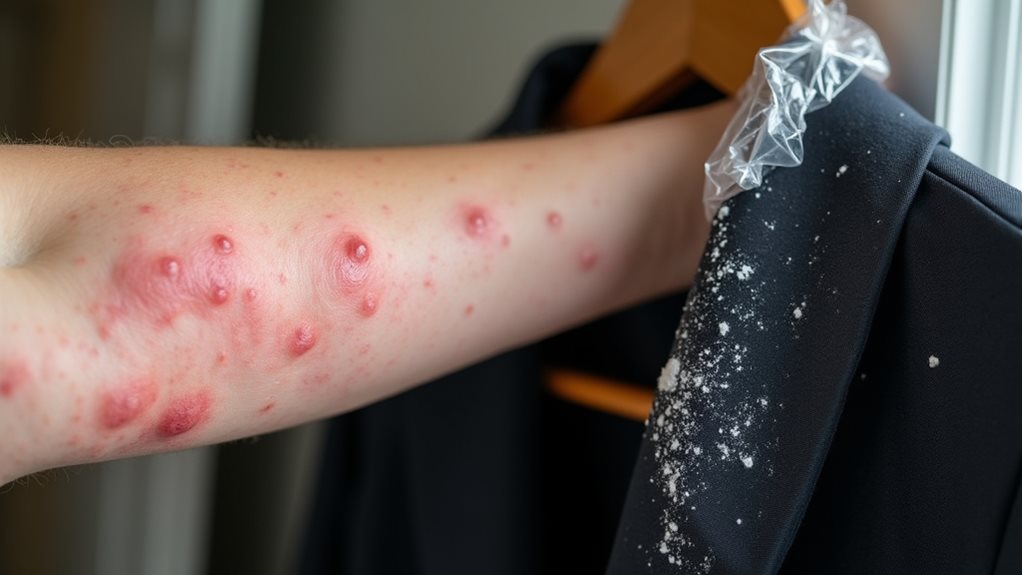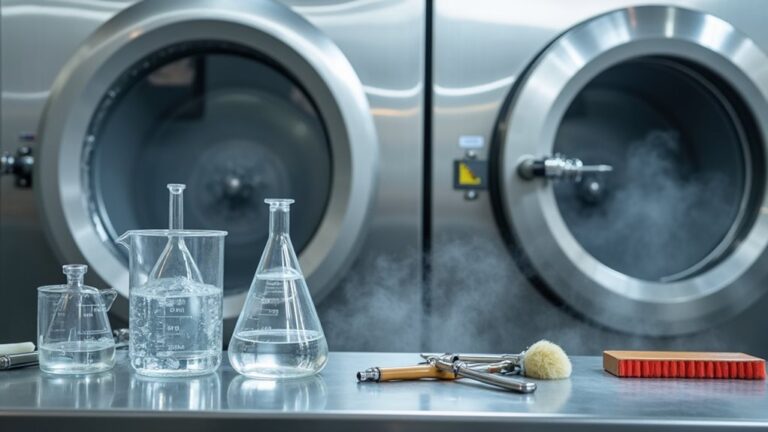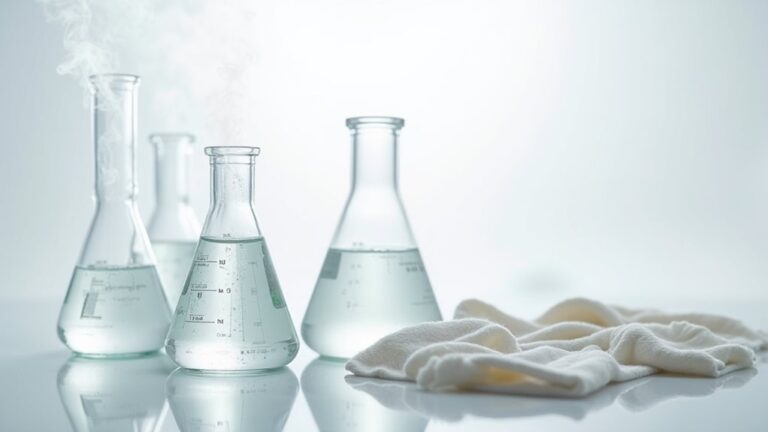Yes, dry cleaning chemicals can definitely cause a rash, and I learned this the hard way after wearing a freshly cleaned wool sweater that left my arms looking like I’d wrestled with poison ivy. Perchloroethylene, the most common dry cleaning solvent, clings to fabrics and triggers contact dermatitis in sensitive individuals, causing redness, itching, and burning sensations within hours of contact. If you’ve noticed mysterious skin irritation after wearing dry-cleaned clothes, you’ll want to explore safer alternatives and prevention strategies.
Understanding Chemical Dermatitis From Dry Cleaning Solvents
When I first started noticing those mysterious red, itchy patches on my skin after picking up my freshly dry-cleaned work shirts, I honestly thought I was losing my mind — turns out, my body was trying to tell me something important about the chemicals lurking in those seemingly pristine garments.
The culprit behind this skin irritation is often perchloroethylene, a powerful solvent that can trigger chemical dermatitis and allergic reactions in sensitive individuals.
Your freshly cleaned clothes might look spotless, but they’re potentially carrying residual dry cleaning chemicals that your skin simply doesn’t appreciate.
If you’ve got sensitive skin like mine, these lingering solvents can cause rashes, redness, and that maddening itchiness that seems to appear out of nowhere 😅.
The EPA has classified perchloroethylene as a probable human carcinogen, making skin contact an even more serious concern beyond just temporary irritation.
Perchloroethylene: The Primary Culprit Behind Skin Reactions
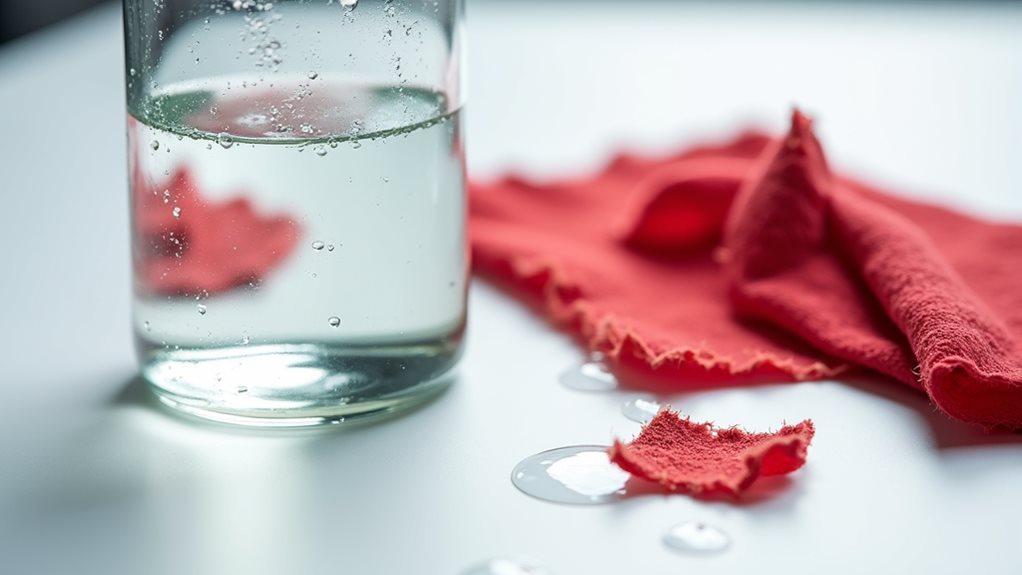
Although it sounds like something straight out of a chemistry textbook, perchloroethylene — or “perc” as it’s commonly called in the industry — is the sneaky villain behind most dry cleaning-related skin reactions.
Honestly, learning about this chemical felt like finally solving a puzzle I didn’t even know I was working on. This carcinogenic solvent that cleaners use doesn’t just disappear after your clothes get processed; it lingers on fabrics like an unwelcome guest, causing everything from mild irritant contact reactions to full-blown allergic contact dermatitis.
Perc doesn’t vanish after dry cleaning — it clings to your clothes like an invisible irritant, ready to wreak havoc on your skin.
Georgetown University’s research confirmed what many of us suspected — wool, cotton, and polyester fabrics retain considerable perc residue that can trigger a skin rash.
This is why choosing dry cleaners that adopt green methods isn’t just trendy, it’s genuinely protective. While brief exposure to dry cleaned garments is generally considered low-risk for most consumers, allowing garments to air out before wearing helps chemical odors dissipate and reduces potential skin irritation.
Identifying Symptoms of Chemical-Induced Skin Irritation
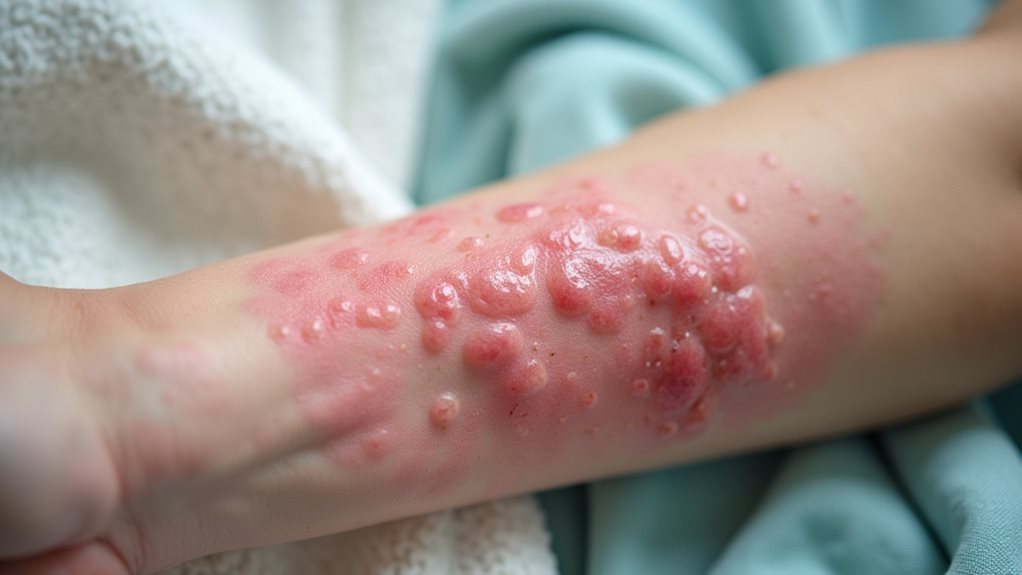
Since your skin basically acts like a detective that never lies, recognizing the telltale signs of chemical-induced skin irritation from dry cleaning becomes vital for protecting yourself from ongoing exposure.
Trust me, I learned this the hard way after ignoring my body’s obvious warnings for way too long. You’ll typically notice redness, itching, or that uncomfortable burning sensation within hours of wearing freshly dry-cleaned clothes, especially if you have sensitive skin like mine.
The most common reaction is irritant contact dermatitis, which affects about 80% of people exposed to cleaning solvents like perchloroethylene.
Watch for blistering, swelling, or persistent dryness, because ignoring these symptoms can lead to chronic skin issues that’ll make you regret not listening sooner.
These reactions are particularly problematic when residual chemicals remain on garments due to inadequate rinsing or ventilation during the cleaning process.
Other Dry Cleaning Chemicals That Trigger Rashes

While perchloroethylene gets most of the attention in discussions about dry cleaning reactions, I’ve discovered through my own trial and error that several other sneaky chemicals can turn your favorite blazer into a skin irritation nightmare.
Your trusted dry cleaner might be using hidden chemicals that transform that crisp shirt into an unexpected source of skin misery.
These harsh chemicals lurk in the shadows, waiting to trigger allergic reactions when you least expect them.
Here’s what to watch for:
- Hydrocarbon solvents – petroleum-based cleaners that can cause redness and burning sensations
- Siloxane D5 – a synthetic compound known for triggering contact dermatitis in sensitive folks
- Precleaning agents – spot removers that often contain aggressive formulas causing skin sensitivities
- Industrial detergents – powerful cleaning boosters that leave irritating residues on fabrics
The frustrating part? Chemical exposure symptoms don’t always appear immediately, making it tricky to pinpoint which dry cleaning chemicals are your personal kryptonite.
Fortunately, many cleaners now offer eco-friendly cleaning methods like wet cleaning and CO2 cleaning that use biodegradable solvents instead of harsh chemicals.
Who’s Most at Risk for Developing Skin Reactions
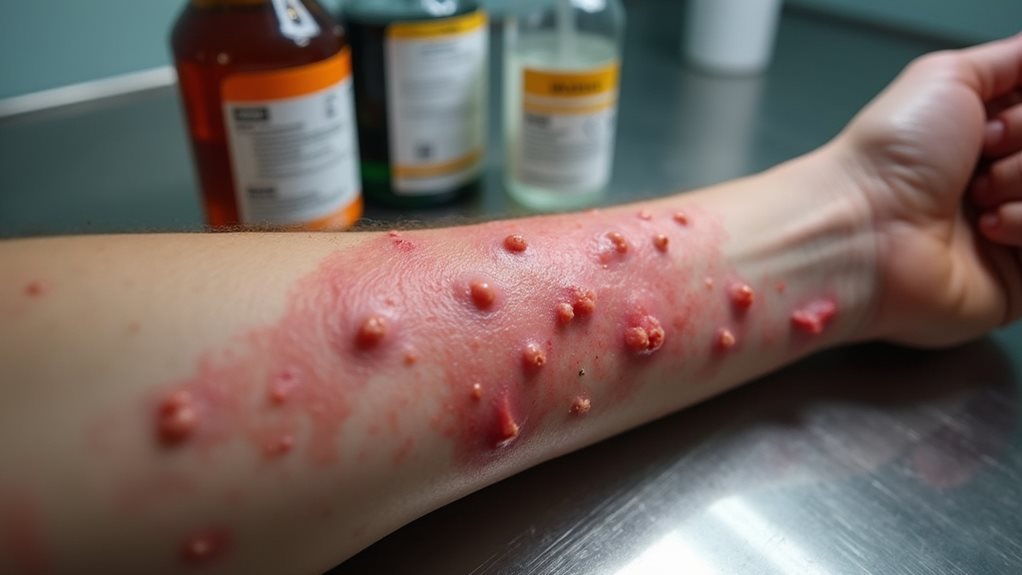
When I first started researching who gets hit hardest by dry cleaning reactions, I discovered something that honestly made me feel both relieved and concerned – certain people are walking around with invisible targets on their backs, completely unaware they’re sitting ducks for chemical-induced skin chaos.
If you’re dealing with eczema or dermatitis, your compromised skin barrier makes you incredibly vulnerable to dry cleaners’ harsh chemicals.
People with existing allergies face double trouble, since cleaning agents often contain fragrances and substances that trigger allergic reactions.
Parents, listen up – your kids’ sensitive skin reacts more intensely to these irritants than yours does.
And if you’re constantly wearing freshly dry-cleaned clothes or work around these facilities, repeated exposure greatly increases your chances of developing painful skin reactions.
Individuals with heightened chemical sensitivities should be particularly cautious of perchloroethylene residues that commonly linger on garments after the dry cleaning process.
Eco-Friendly Dry Cleaning Alternatives for Sensitive Skin
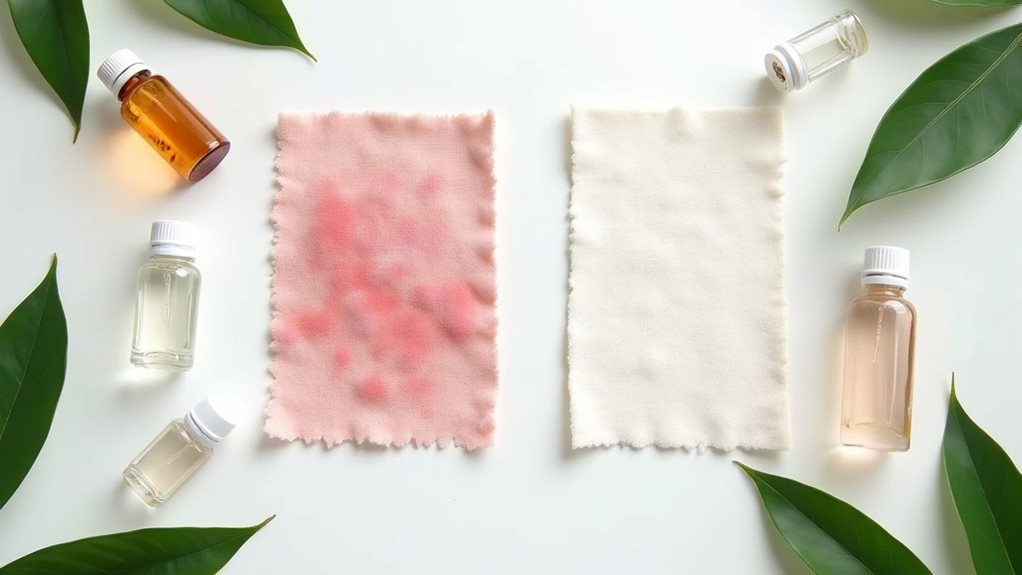
If you’re tired of dealing with itchy, red skin after picking up your freshly cleaned clothes, you’ll be relieved to know that green cleaning methods like liquid carbon dioxide and wetcleaning can give you spotless garments without the harsh chemical aftermath that traditional solvents leave behind.
These skin-safe solvent options work just as effectively as the old-school perc-based methods, but they won’t turn your favorite silk blouse into a rash-inducing nightmare that has you scratching like you’ve rolled around in poison ivy 😅.
The best part is that these eco-friendly alternatives use hypoallergenic, fragrance-free agents that respect your skin’s boundaries while still getting out those stubborn stains that seem determined to become permanent residents on your clothing.
Other gentle alternatives include hydrocarbon-based cleaners and liquid silicone, which effectively dissolve oils and grease without the environmental and health concerns associated with traditional dry cleaning chemicals.
Green Cleaning Methods
As someone who’s battled mysterious rashes after picking up freshly dry-cleaned clothes, I’ve learned that green cleaning methods can be absolute game-changers for sensitive skin like mine.
These innovative approaches use liquid carbon dioxide and wetcleaning instead of harsh chemicals like perchloroethylene, which honestly sounds terrifying enough to avoid 😅. The difference is remarkable – no more chemical residues clinging to your favorite blazer, waiting to irritate your skin.
Here’s what makes green cleaners worth pursuing:
- Liquid carbon dioxide cleaning leaves zero harmful residues on fabrics
- Wetcleaning uses biodegradable detergents that are less toxic than traditional solvents
- Solvent distillation after every load guarantees complete chemical removal
- Hypoallergenic alternatives protect you from allergens and irritants
Finding these cleaners takes effort since less than 3% use green technology, but your skin will thank you. Other eco-friendly options include silicone-based solvents and hydrocarbon-based cleaners, which offer safer alternatives while maintaining excellent cleaning effectiveness for delicate fabrics.
Skin-Safe Solvent Options
The specific solvents your dry cleaner chooses can make or break your skin’s comfort, and honestly, I wish someone had explained this to me years ago when I was dealing with those awful post-cleaning breakouts.
You’ll want to avoid toxic perchloroethylene, which triggers rashes and allergic reactions through its harsh chemical properties that linger on fabrics. Instead, seek out eco-friendly alternatives like liquid carbon dioxide and silicone-based cleaners, which effectively remove stains without leaving harmful residues that irritate sensitive skin.
Companies like European Cleaners prioritize hypoallergenic methods, using green technology to protect your skin care routine.
When you consistently choose these safer dry cleaning options, you’ll greatly reduce chemical buildup and enjoy irritation-free clothes. Additionally, always allow freshly dry cleaned garments to air out before wearing them, as PERC residues can remain on clothes and cause skin irritation if not properly ventilated.
Preventing Rashes From Dry Cleaned Garments
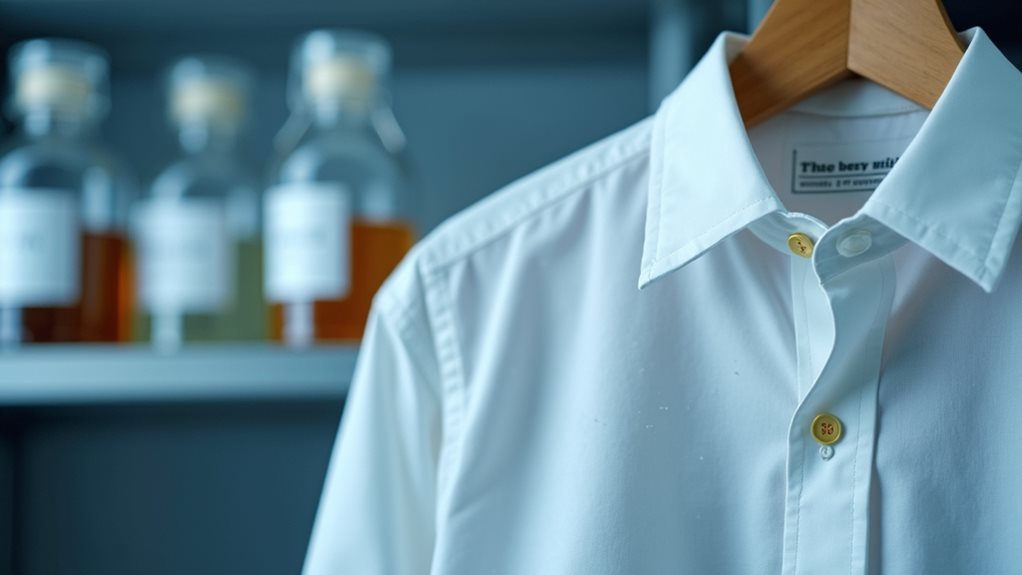
You can absolutely protect your skin from those pesky dry cleaning chemicals that left me looking like I’d wrestled with poison ivy after wearing my favorite blazer straight from the cleaner’s plastic bag.
The smartest move you’ll make is choosing eco-friendly dry cleaners who use gentler methods, because trust me, your skin will thank you when you’re not scratching through important meetings like I did.
Once you get your clothes home, give them some breathing room by hanging them in a well-ventilated area for at least 24 hours, allowing those chemical residues to dissipate before they’ve a chance to turn your skin into an angry, red canvas.
If you have sensitive skin or known chemical sensitivities, consider alternative cleaning methods since contact dermatitis from dry cleaning solvents can develop even with minimal exposure.
Choose Green Cleaning Methods
When my favorite silk blouse came back from the cleaners reeking of chemicals and left my arms covered in angry red welts, I realized I’d been trusting my delicate garments to a process that was anything but gentle on my skin.
That’s when I discovered green cleaning methods could save both my wardrobe and my sanity. Instead of perchloroethylene, eco-friendly cleaners use safer alternatives that won’t trigger skin rashes.
Here’s what to look for:
- Liquid carbon dioxide cleaning systems that leave zero chemical residue
- Silicone-based solvents that prioritize your skin’s health
- Hypoallergenic options specifically designed for sensitive individuals
- Cleaners who’ll discuss their methods openly
These hydrocarbon-based cleaners and other alternative solvents maintain the same cleaning effectiveness for delicate fabrics while reducing the risk of skin irritation.
Always air your clothes in a well-ventilated area afterward—your skin will thank you!
Air Out Garments Properly
After picking up my freshly cleaned clothes, I learned the hard way that rushing to wear them immediately was like inviting trouble to dance with my skin—and trust me, it wasn’t a graceful waltz.
Now I always air out my dry cleaned garments for at least 24 hours in a well-ventilated space, allowing those pesky residual chemicals like perchloroethylene to evaporate before they can trigger skin rashes. I hang them outside when weather permits, or near an open window where fresh air can work its magic.
Instead of plastic bags, I store aired garments in breathable fabric covers that prevent chemical buildup. For extra sensitive skin days, I’ll even wash garments with a gentle detergent, removing any lingering allergens that might cause irritation.
Treatment Options for Chemical Contact Dermatitis
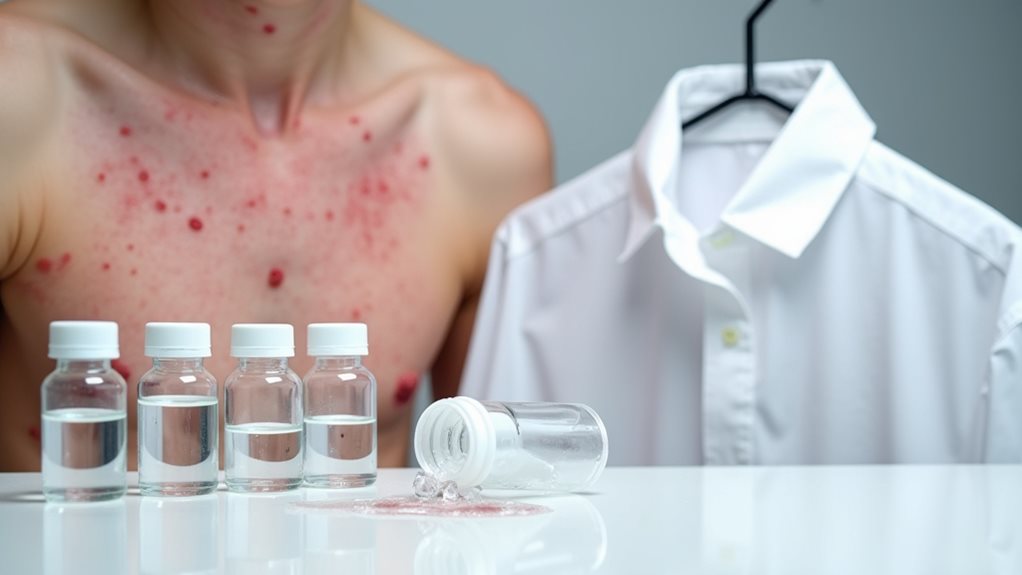
While discovering that your favorite dry-cleaned blazer has turned your skin into an angry, red mess can feel overwhelming, there’s genuine hope in knowing that effective treatment options exist to calm your irritated skin and get you back to feeling comfortable.
Chemical contact dermatitis responds well to straightforward approaches that focus on healing your compromised skin barrier while reducing inflammation.
Your first line of defense involves removing the offending garment immediately, then gently cleansing the affected area.
Here’s what dermatologists typically recommend:
- Apply topical corticosteroids to reduce inflammation and itching
- Use antihistamines for uncomfortable symptoms
- Incorporate gentle moisturizers to restore your skin’s protective barrier
- Consider prescription treatments for persistent cases
If symptoms worsen or don’t improve within a few days, consulting a dermatologist guarantees you receive personalized care.

